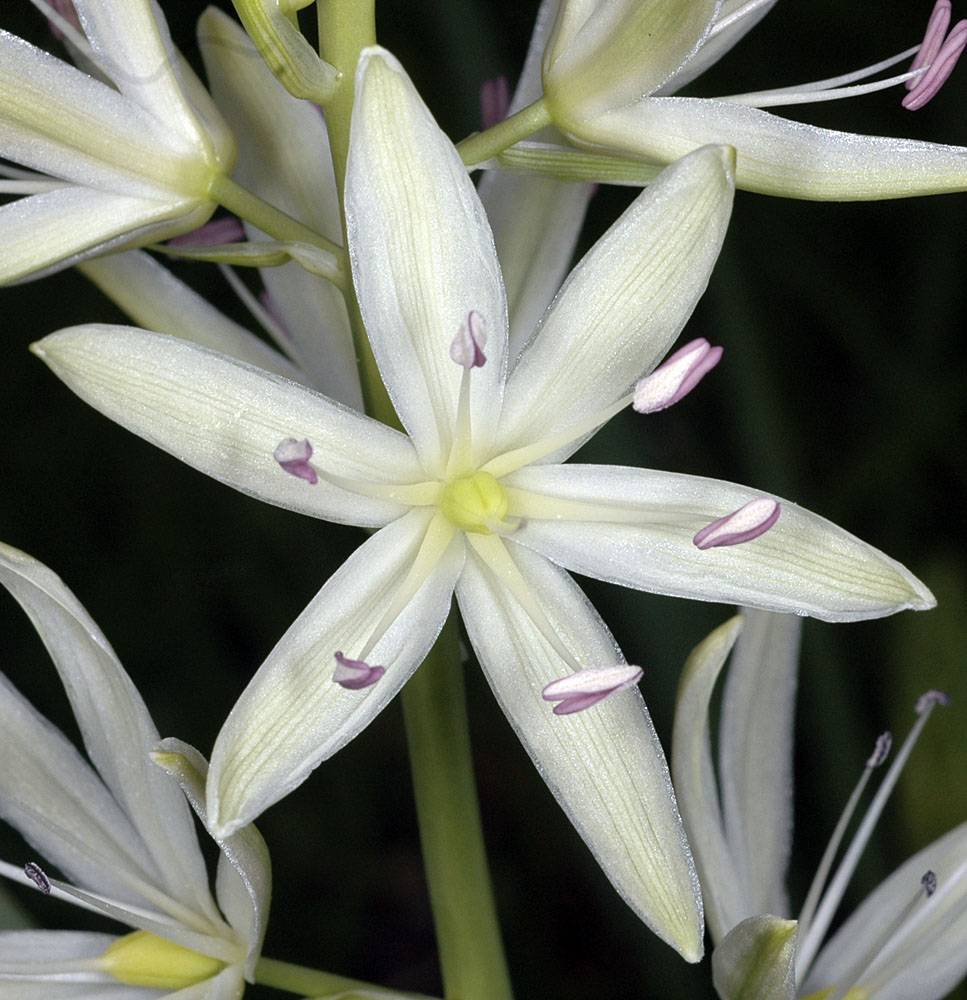
Plants diurnal or rarely vespertine; 20–130 cm tall; bulbs usually solitary.
Leaves 4–8(9), lanceolate, 20–70 cm × 5–30 mm.
Inflorescences 6–60-flowered, often only 1–4 flowers open at a time; sterile bracts 0–3(5), most equal or shorter than pedicels, tan to pale green; pedicels spreading, forming broad angle with stem.
Flowers corollas radially symmetric; tepals 2–4 cm × 4–12 mm, blue to deep blue-purple or creamy white, withering connivently and twisting off top of fruit or deciduous from pedicels that remain on stem, veins 5–9.
Fruits oblong-ovoid, 1–3 cm × 5–15 mm, dull.
Seeds 6–12 per locule.
Western North America. 2 subspecies.
Subspecies suksdorfii is the most broadly distributed of the two C. leichtlinii taxa. In Douglas County, it occurs near C. l. ssp. leichtlinii but usually in separate populations. These subspecies are potentially interfertile based on a historically known site near Roseburg where a creamy-white form dominated, yet plants showed the full color range. Further population-level study is needed. The tall racemes, strictly radial symmetry, and connivently twisted, deciduous tepals distinguish C. leichtlinii from all subspecies of C. quamash. Plants in populations of C. cusickii, C. quamash ssp. breviflora, and ssp. walpolei can produce radial, near radial, or slightly bilateral flowers, but these taxa have three tepal veins in contrast to five to nine in C. leichtlinii. In Camassia, anthesis length varies, but flower buds usually open from mid-afternoon to dusk. Relative to C. quamash and C. cusickii, the mostly diurnal flowers of C. leichtlinii remain open for a shorter time, sometimes closing as early as late morning or early afternoon, leaving racemes with only buds above the withered flowers (Gould 1942).
Great or Leichtlin’s camas has bright blue or white star-shaped flowers with flecks of golden pollen at their center. Flowers burst open starting from the base of each flower spike and if blue, deepen in color with maturity. This species is taller, with usually 2-3 foot stalks, and later to bloom than common camas. Beneath the elegant spires of blooms, slender leaves can form clusters of grass-like groundcover amenable to meadowscapes and rock gardens.
as described under Camassia leichtlinii
Bulbs usually solitary, ovoid, 1.5-3 cm diam. Leaves 3-9, 2-6 dm × 5-25 mm. Inflorescences 20-130 cm; sterile bracts 0, bracts subtending flowers usually shorter than pedicel. Flowers actinomorphic; tepals strongly connivent over capsules after anthesis, deciduous as capsules develop, bluish violet to bright blue or creamy white, each 5-, 7-, or 9-veined, 20-40 × 4-10 mm; anthers yellow, 4-7 mm; fruiting pedicel spreading-erect, 15-50 mm. Capsules often deciduous from pedicel, dull green, ovoid to ellipsoid, 10-25 × 6-12 mm. Seeds 6-12 per locule. 2n = 30.